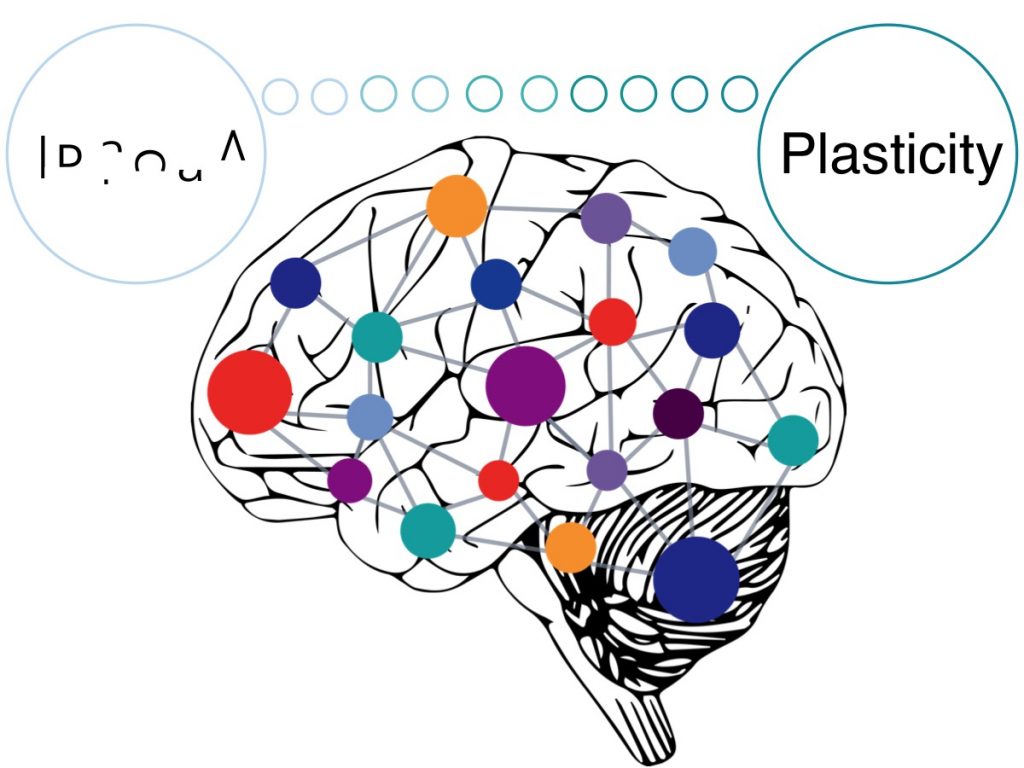
The beginning reader slowly scans through each letter. They try to recognize the letter and remember the sound or phoneme that goes with it, in order to combine these letters into a word. However, the skilled reader rapidly scans a page of text. They effortlessly and automatically recognize each word as their eyes dart from one word to the next. How has the brain changed to create this impressive new skill?
The skilled reader has spent hundreds of hours practicing translating letters to sound and then sounding out words. Through this practice they have strengthened connections in their brain. Neurons have activated over and over again. Connections between neurons have formed or strengthened until the rules of our writing system are wired into the brain.
The process of learning to read takes advantage of a brain principal known as plasticity. Plasticity is your brain’s ability to be molded, shaped, and changed by experience. The development of fluent reading skills all involve massive changes to the brain. Our brains have evolved specialized regions that allow us to recognize important objects, such as a friend’s face, a hidden predator in the woods, or a piece of ripe fruit hanging from a tree. Through experience, these brain regions are re-wired to recognize words. Studies have documented how visual processing regions of the human brain change to make space for the visual word form area. The visual word form area is a part of the brain that stores all the written words that we know. It allows us to recognize these words as easily as we recognize anything else we see.
With practice, the task of reading becomes second nature, almost involuntary. The avid reading adult often forgets how much time they spent to get there. When you see a word, you can’t help but hear its sound and understand its meaning.
-
- Dyslexia
- a learning disability characterized by poor spelling and difficulties with word recognition and word decoding. It is unrelated to intelligence, motivation, or school experience
- Explicit instruction
- systematic and direct teaching that takes into account students’ prior knowledge
- Phonics-based reading instruction
- teaching focused on how letters represent sounds and how words can be sounded out by knowing letter-sound correspondences
- Plasticity
- the brain’s ability to change as a result of experience